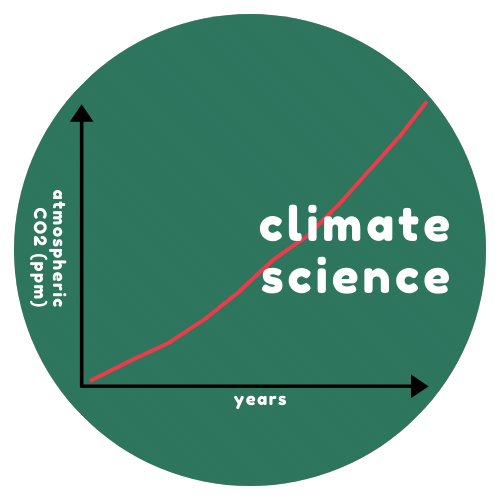Element Descriptor

Climate science is confusing and intimidating for a lot of people. Being able to explain the basics, and the uncertainties, techniques and models of “climate science” is a crucial skill. Not being able to do so makes you look like a pointless hippy who can be safely ignored.
Level descriptors
| Novice | Practitioner | Expert | Ninja |
|---|---|---|---|
| A work colleague says “I hear so much from so many people, but I don’t have a science degree. I have half an hour to sit down – could you tell me the science behind the claims, in simple terms.” You can say “yes”. You’re aware of the basic science, the buildup of CO2, its causes and consequences | Helping your work colleague understand the basics, someone sneers and says “It’s all sunspots: I read it in the Daily Mail.” You can smile and, with facts, rebut their arguments. You’re aware of the denialists lines and lies, their logical fallacies. You can keep your cool when being lied to/condescended… | NB IS THIS A GOOD USE OF YOUR LIMITED TIME AND ENERGY?? You’re able to keep up with the latest science and explain to novices in language they can get what it all means. You can play whack-a-mole with denialist arguments without having to call upon www.skepticalscience.com | Your friend at the BBC phones, panicking. Professor Kevin Anderson’s flight from London to Manchester is in a stack, so he’s unavailable. Can you take on Richard Lindzen and Nigel Lawson in 20 minutes time on Newsnight? You say “duh, of course.” You’re sending fact-checking letters to Nature Climate Change and Science. You really should get out more, because it is later than even you think… |
Element Overview Essay
This is a draft. If something doesn’t make sense, or you see typos, or if you have further ideas, please email us on contact@activecitizenshiptoolkit.net
The causes of so many people not understanding the basics of climate science is well, there’s more than one cause. First off, let’s just admit, most people don’t like to do science or think scientifically, because it’s confusing or it was taught badly at school or they’ve internalised the idea that somehow they’re not smart enough.
Now, obviously, understanding quantum mechanics is going to be a little tricky or the finer points of any science but the basics of climate science are pretty basic, which leads on to the next cause.
There has been a very deliberate prolonged well financed and ultimately successful campaign to sow seeds of doubt in the public mind. And I won’t recap that there’s books by Ross Gelbspan, Oreskes and Conway, etc. and George Monbiot did some of the early lifting on this in his 2006 book Heat.
The consequences are that people put climate science and the big issue of climate change. In a little padlock box marked, “leave it to the experts, and maybe it’s not happening.” Even while at the same time, they will publicly say that climate change is happening because there is now a certain social stigma to being a fruitcake sorry, a denialist.
What is to be done? Well, if you are a group campaigning on climate change, you have to find or devise and refine simple ways of explaining what’s going on.
Fortunately this is not difficult. My favourite one is this.
You are lying in bed under a duvet on a nice Sunday morning. It is not too hot, it is not too cold. If your mum comes in and says “get up your lazy bum” and pulls away pretty quickly you’ll be too cold. If she comes in and coos at you and says “Oh, you’re so lovely” and throws another duvet over you, for a minute it might feel great. But pretty soon you’re overheating.
Well, there is a duvet of what’s called greenhouse gases around the planet we have known since 1824, when Fourier published a scientific paper that there must be something trapping a certain amount of the sun’s heat: otherwise, the planet would be a lot colder, based purely on hits distance from the sun
In the 1850s and 60s, Eunice Foote, and more well known. John Tyndall pointed the finger at what was then called carbonic acid and is now called carbon dioxide. In 1896, a Swedish scientist Svante Arrhenius calculated – and it took him a year – that if you’d doubled the amount of co2 in the atmosphere, you would get somewhere between sort of three and four degrees of additional warming.
Since the late 1950s, we have known that carbon dioxide is building up in the atmosphere thanks to our burning of fossil fuels. And we are making the duvet, thicker and thicker and thicker. And there will be consequences.
Now public health warning about this analogy. In the analogy, the heat is coming from inside the human body, and it’s not being able to get out into space because of the duvet. In reality, the heat is coming from the sun and bouncing off the air. But on the whole, that simple metaphor will work.
You can then explain to people that there’s something called the Keeling Curve which measures the amount of co2 in the atmosphere, and that nobody denies that is going up and up and up. There will be consequences.
Development Resources

Assessment Resources

